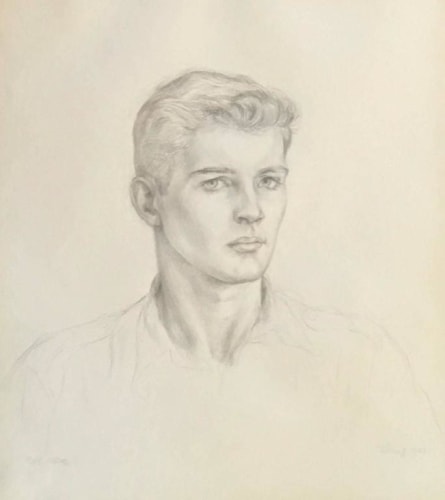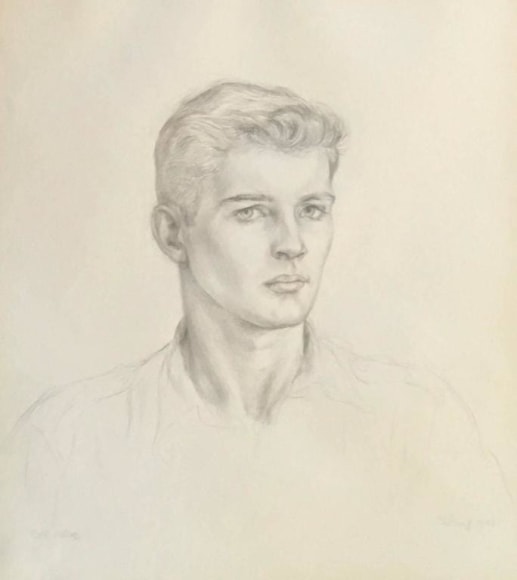Paul Cadmus

Portrait of Bill Miller, 1943
Paul Cadmus (1904 – 1999)
Paul Cadmus was born in New York City on December 17, 1904 and lived and worked in New York City. He came from an artistic family. His father was a lithographer who painted in a modest way; his mother did illustrations for children’s books; his sister was a designer. Paul began to draw when he was two and one-half. When he was fourteen, he entered the National Academy of Design and the Art Students League. He was the pupil of Joseph Pennell, William Aurbach-Levy, Charles Locke, and Jared French.
Later he worked for an advertising agency until he had some money; he became the lover of Jared French and the two went to live in Majorca. When he returned to the United States in 1933, there were no jobs for young artists. He joined the Public Works of Art Project, forerunner of the Works Progress Administration and painted “The Fleet’s In”, a painting so controversial that it was pulled from a show of WPA Art at the Corcoran Gallery in Washington. By the time the fuss over the painting had subsided, Cadmus was receiving wide invitations to exhibit his work. Museums bought his etchings.
Cadmus won overnight fame when Assistant Secretary of the Navy Colonel Henry L Roosevelt (FDR’s cousin) had the painting pulled from that Corcoran show. The painting was considered too blasphemous for the public to see; the hue and cry about it was similar to the fuss over photographer Robert Mapplethorpe and his photographs many years later, or the public fuss over the more recent show of English artists at the Brooklyn Museum. In Cadmus’ case, the painting was luckily hidden in a private men’s club in the District of Columbia and was only made available to the public in the 1980s when it was displayed in the Navy Museum, and lent out for temporary exhibit.
Cadmus was a satirist. His eye was keen and his memory sharp. He rarely used models, preferring to work from memory and careful sketches. His absorbing interest was painting people and especially their anatomy – the play of muscles and the stretch of skin above them. In both his interest and his style, he takes openly after the 16th Century Italian painter, Signorelli. Cadmus kept his color harsh and high-pitched to reflect the vulgarity of life as he saw it.
Cadmus was famous before he was thirty; by the time he was in his mid-forties he had turned to abstract themes. Working well through his late eighties, he was an old style draftsman who continued to blend his own egg temperas. In his later decades, he concentrated on drawings as finished works, in crayon, chalk, silverpoint and casein on hand-toned papers. Humor continued to mark much of his output, but his primary focus was still on portrait and nude drawings of men – particularly Cadmus’ life companion, Jon Anderson – characterized by classical restraint.
The painter’s life and career quieted after the turbulent 1930s, and he continued his small but steady flow of work, producing many drawings but no more than 150 canvases. He was elected an academician of the National Academy and member of both the American Academy and Institute of Arts and Letters. Cadmus lived until he was ninety-four; he died on December 14, 1999 at his home in Weston, Connecticut.
The following was written and compiled by Jean Ershler Schatz, artist and researcher from Laguna Woods, California:
Sources include:
Time Magazine, December 5, 1949
Stephen May in ARTnews, September 1998
Myrna Oliver in Obituary in Los Angeles Times, on Thursday 16, 1999
Biography from the Archives of AskART
